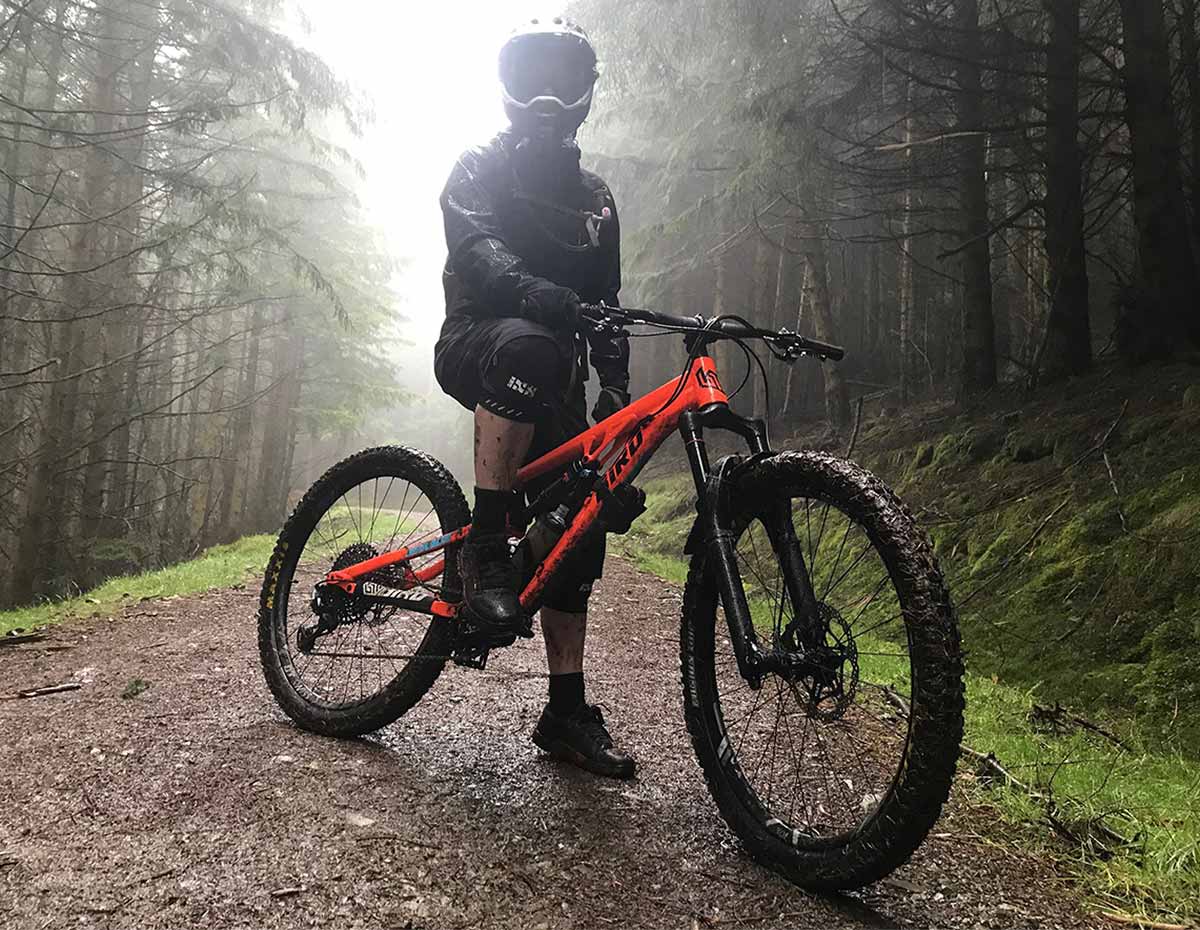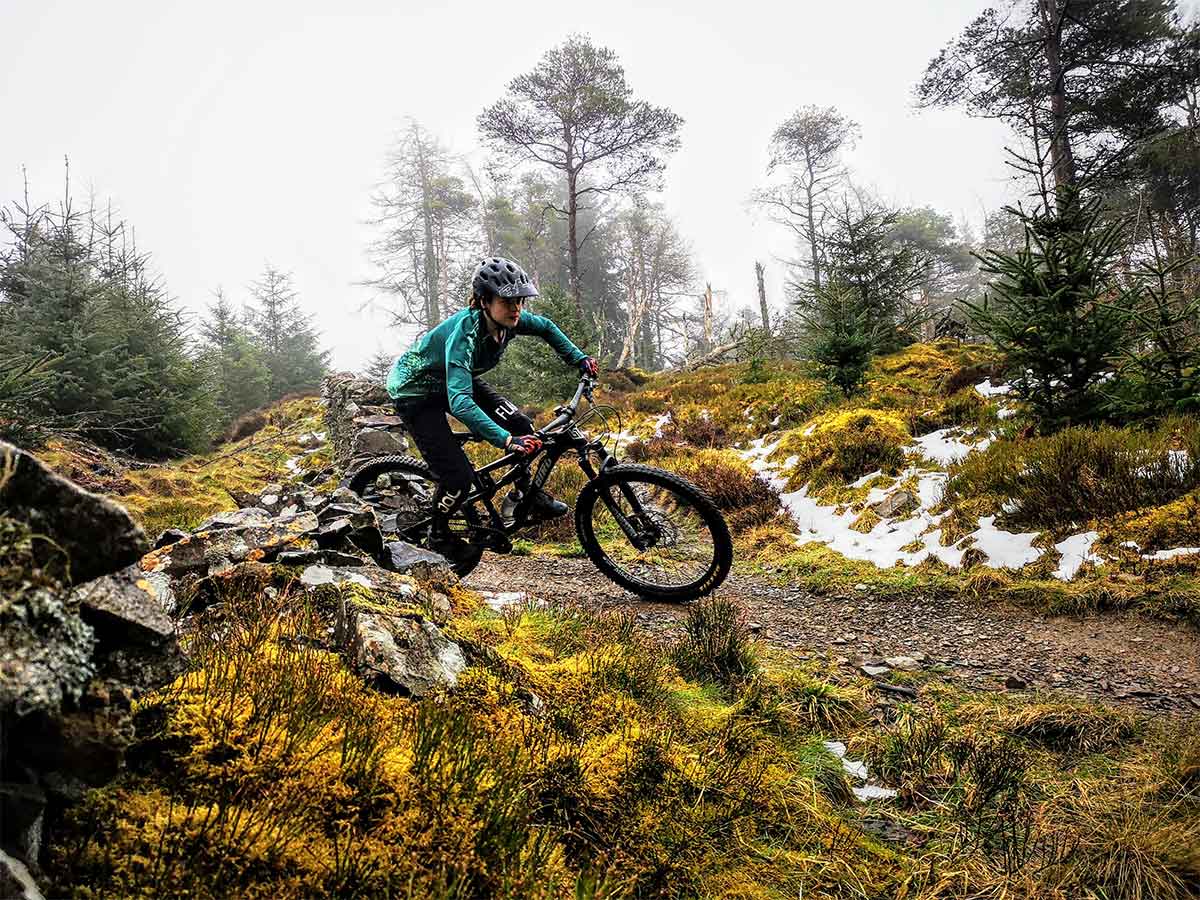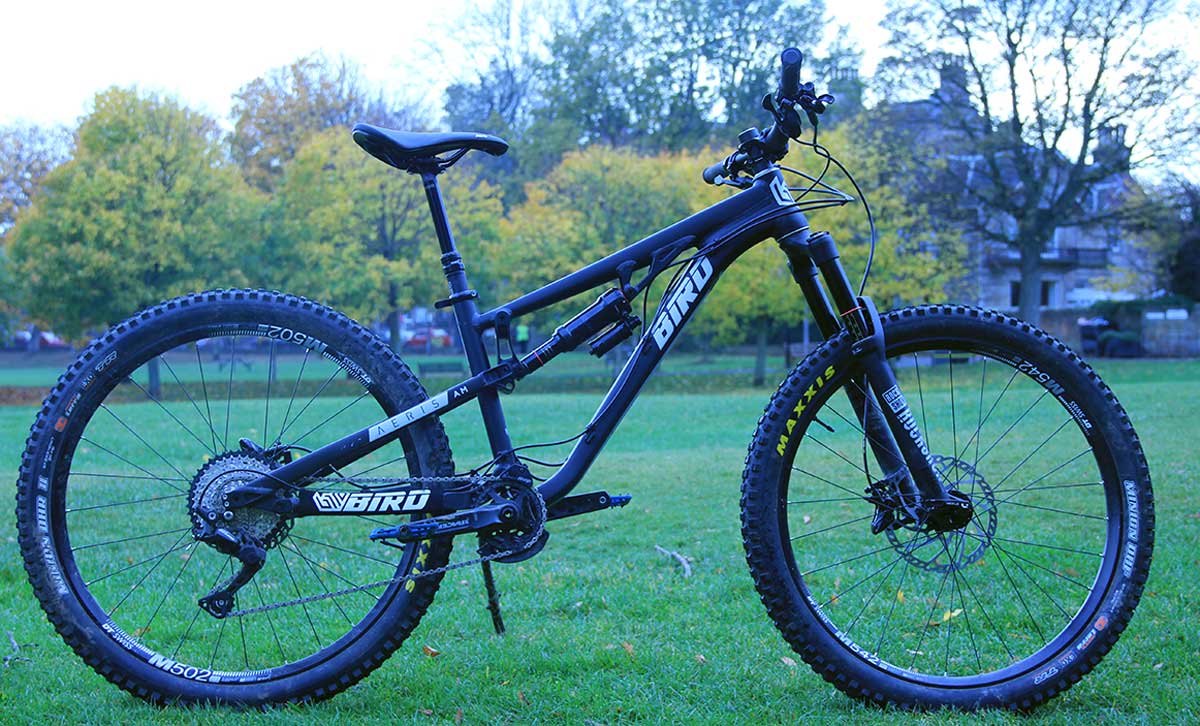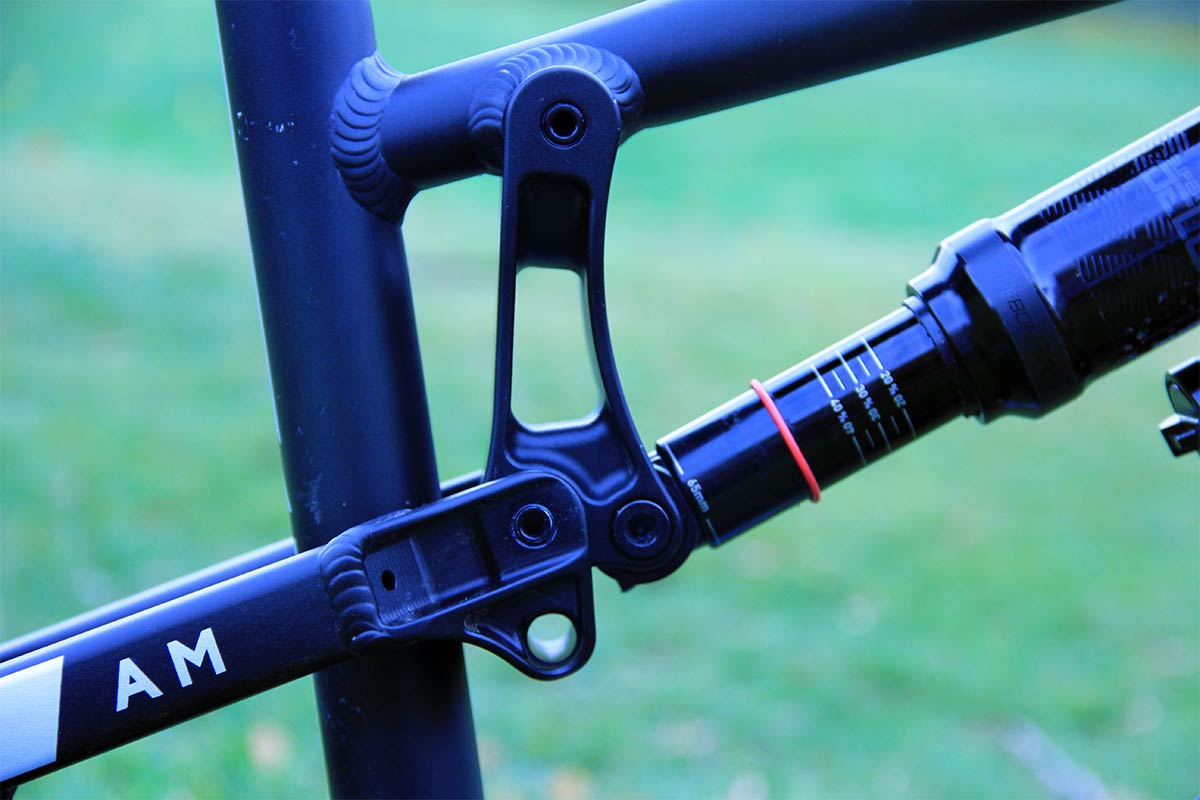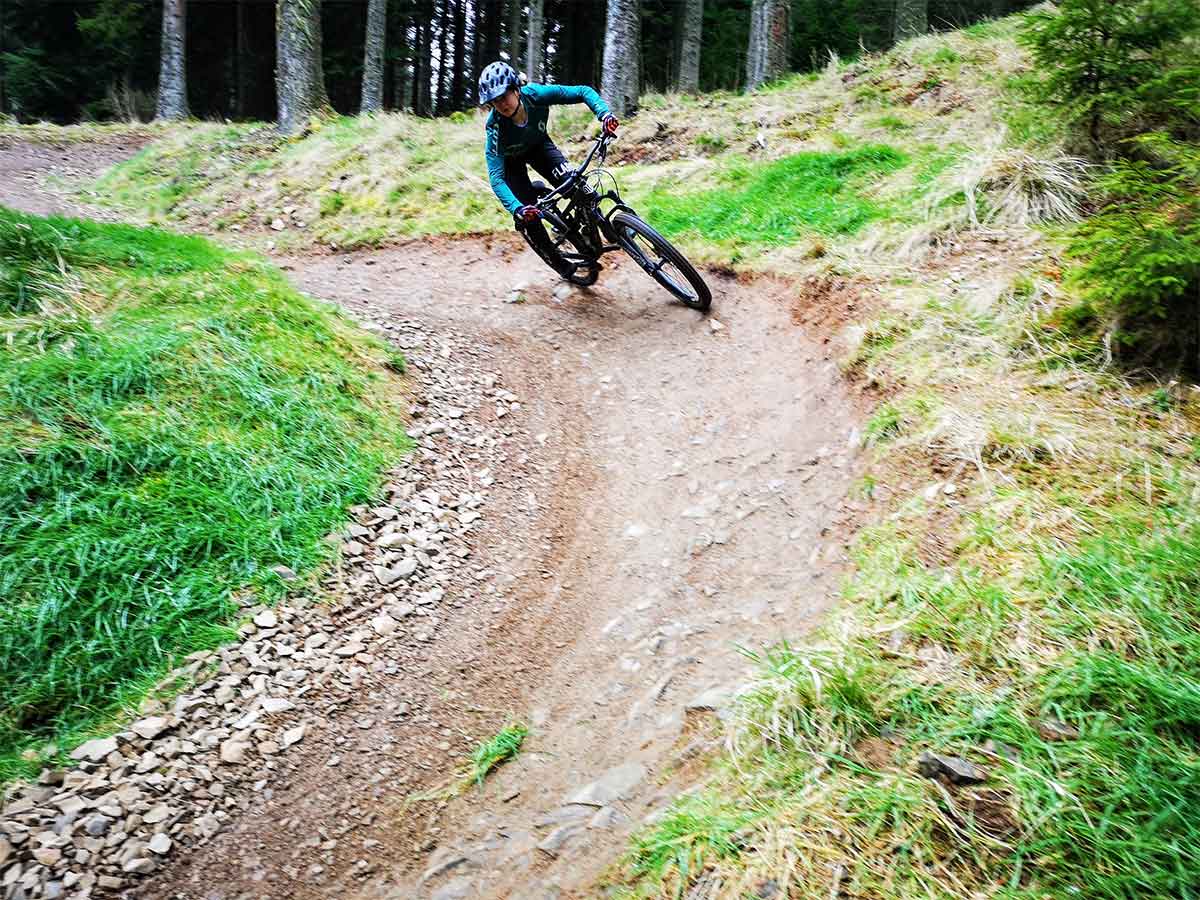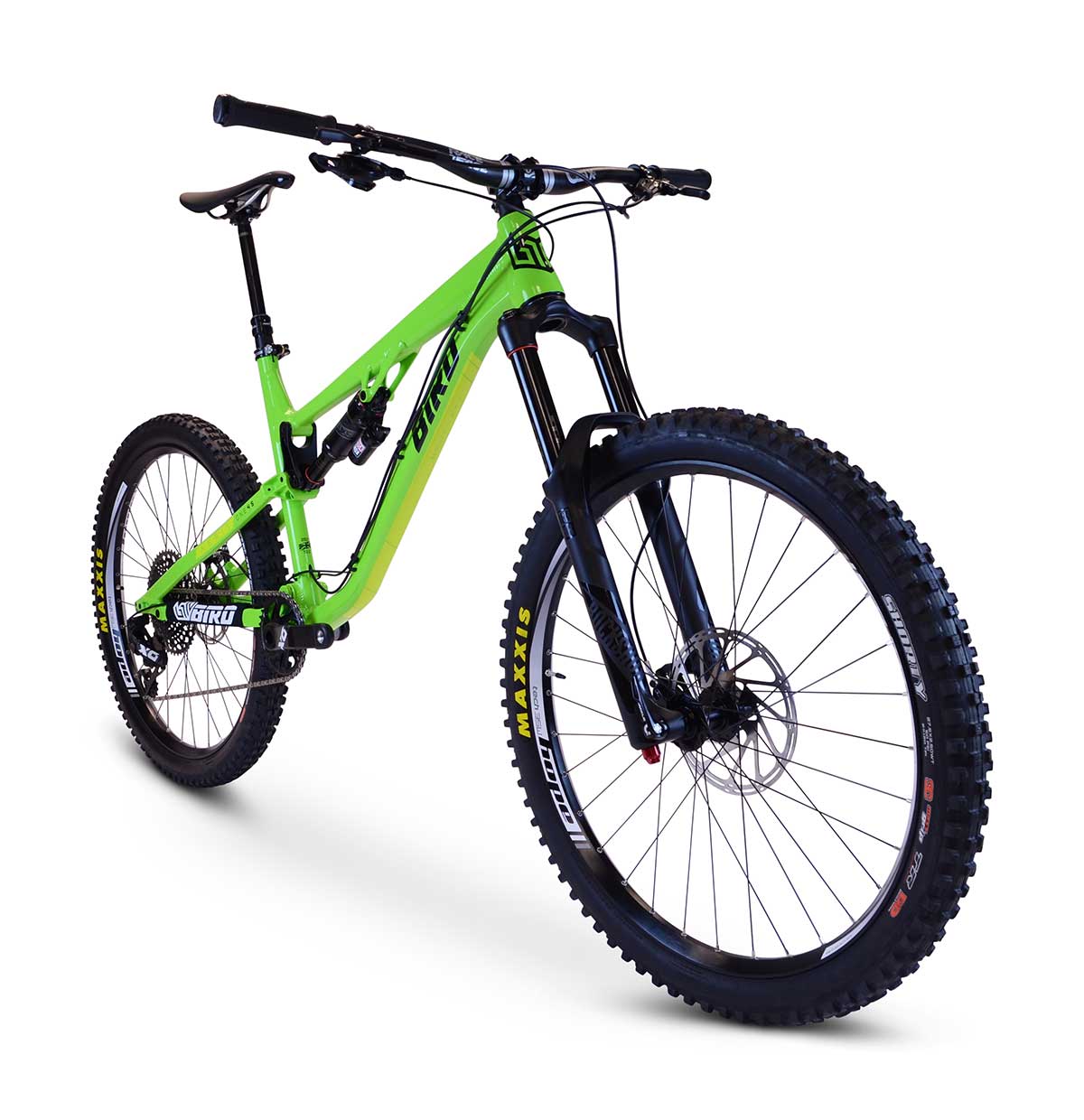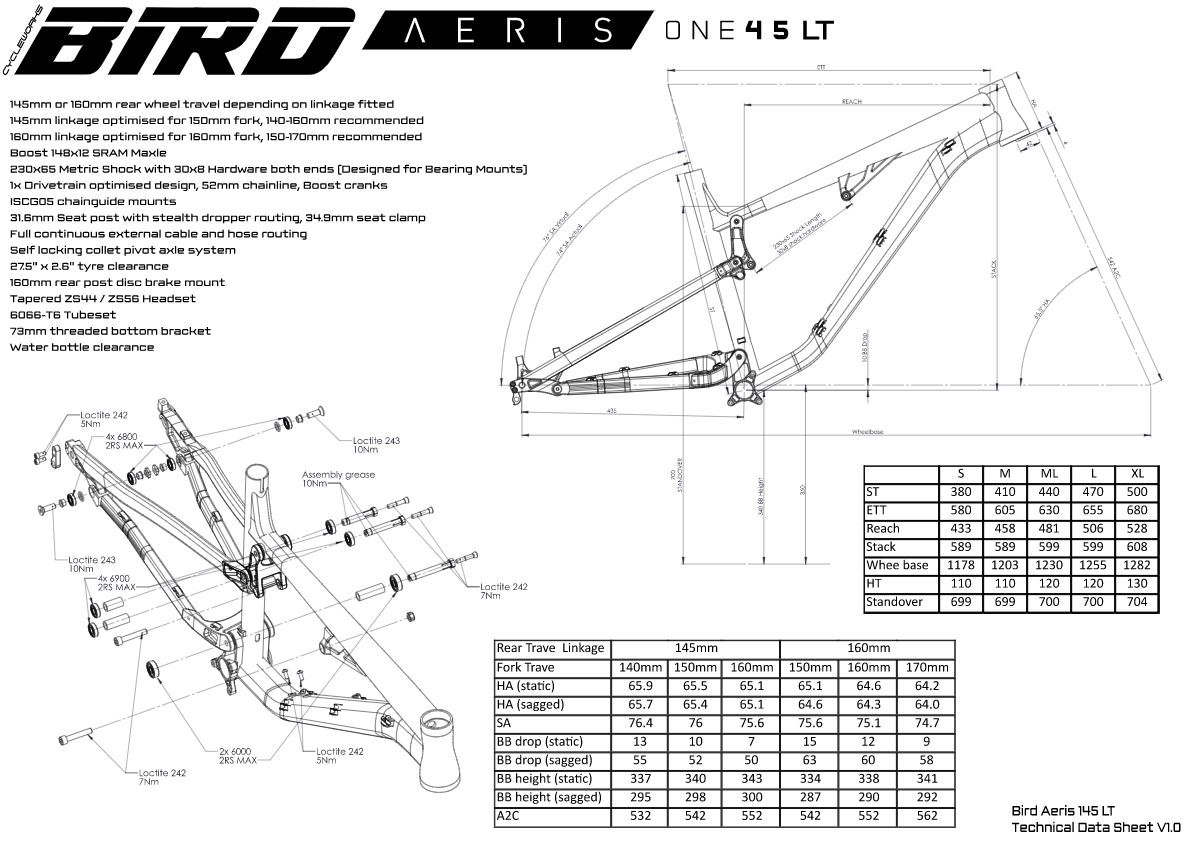For the last 6 months I have had the pleasure of riding the Bird Aeris AM, putting it through its paces on my local trails in the Tweed Valley, Scotland. The Aeris is a trail or enduro bike, depending on how you want to ride it, and depending on the shock linkage you go for. Originally launched in 2017 as the Aeris 145LT, the now rebranded Aeris AM 160 shares the same frame as the 145 but houses a different length linkage on the horst 4-bar suspension platform.
Why the rebrand, you say? Bird found that the vast majority of customers were opting for the longer suspension linkage, giving them that extra 15 mm of rear wheel travel. The extra travel comes concomitantly with a slightly lower bottom bracket and a slightly slacker head angle.
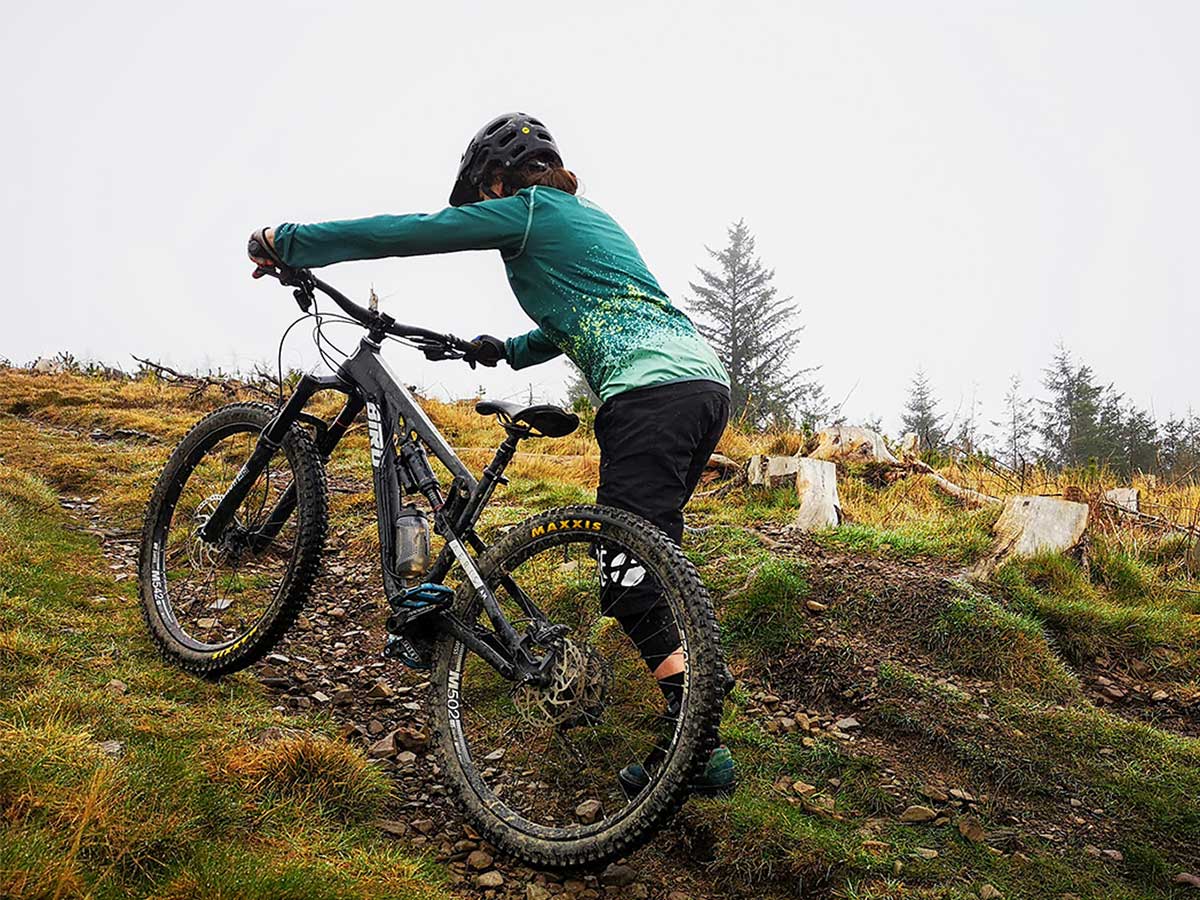
As this is a long-term review piece, let me tell you about the terrain the Bird has been subjected to. The Tweed Valley, home to two of Scotland’s 7Stanes Mountain Bike Trail Centres, and plethora wild trails, is renowned for its loamy, ultra steep terrain (-35% average gradient not uncommon). Though this wasn’t by any means the harshest winter I’ve seen in Scotland, the Bird has still been subjected to snow, hail, mud, grit and, very briefly, dust. I’m happy to say that after 6 months of riding the Aeris, the pivot bearings still feel as smooth as they did on day one, with no identifiable play in the system.
Bird Aeris AM 160 Mountain Bike
The Bird Aeries isn’t a new bike; it has been around since 2017 and, with the success it has seen in the UK, it is likely to be around for quite some time. That, and its unquestionable value for money, this bike is certainly deserving of a closer look. On the topic of value, Bird have just released 5-year Anniversary editions of the Aeris and Zero AM hardtail, featuring the new SRAM SX Eagle 12-speed 10-50T groupset. I tested the Aeris in both 145 and 160 versions, opting to switch for the longer and slacker 160 after just a few rides on the 145 – not because I didn’t like the 145, but because I thought a lower, slacker and longer travel bike to be more appropriate for the terrain.
On the Aeris 145, the suspension platform is designed to be slightly regressive initially, for small bump sensitivity, until the sag point at which it then becomes progressive and more supportive. The 160 linkage changes the suspension kinematics to be more linear through the initial part of the stroke, becoming rapidly more progressive beyond the sag point. I’m told the more progressive Aeris 160 geometry is much more suited to coil shocks than the Aeris 145. Ben, the founder of Bird opted for the Horst 4-bar suspension platform simply because it is most easily tuned for optimisation of the 4 most important suspension characteristics; anti-squat, leverage ratio, pedal kickback, and anti-rise.
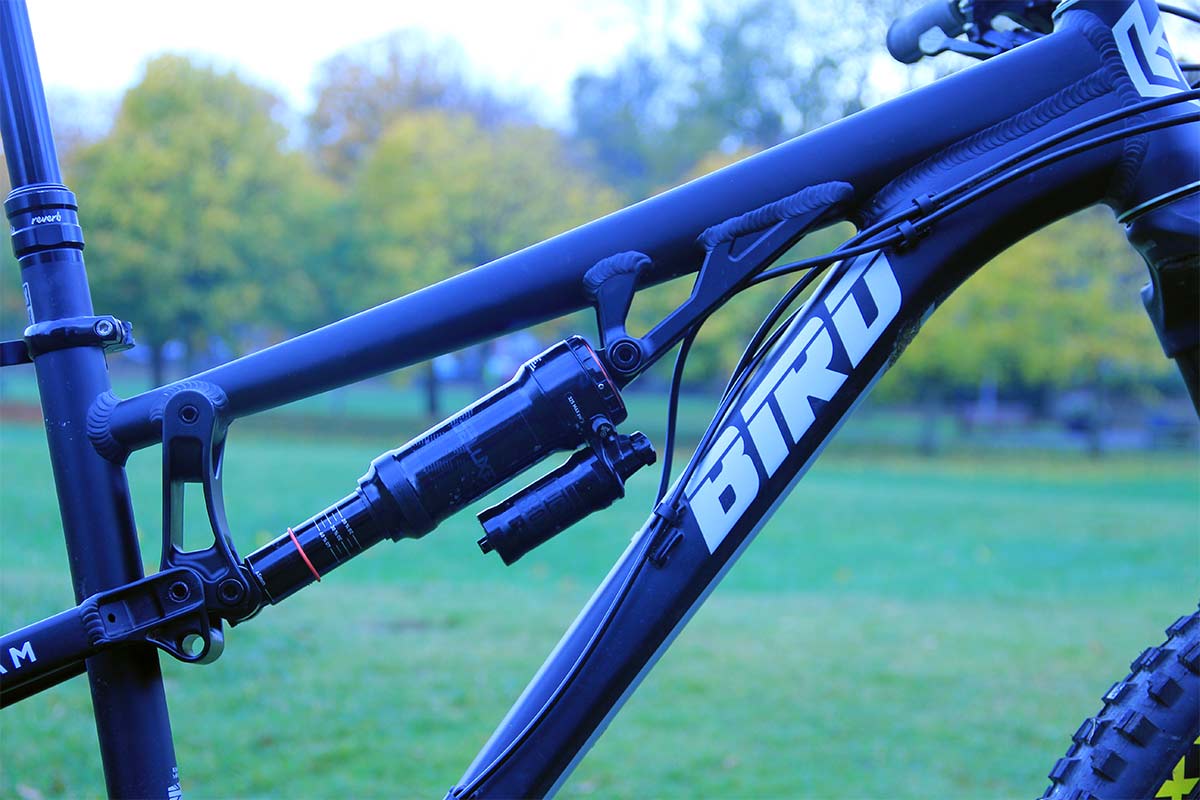
The Taiwanese-made frame itself is formed of 6066-T6 custom-butted alloy tubing. The top tube is plain gauge (2.0mm along the whole length) – Ben looked at the weight saving the custom butting would allow for and decided it was far too small to warrant the effort, and increase in price the butting would incur. In addition, with the shock mount on the top tube, the extra strength is required right along the top tube, not just at the terminal weld areas. The downtube is double butted. At the front end, the top tube is square for improved steering accuracy. Where the top tube and downtube meet the headtube you’ll see one very big seam weld, rather than 2 separate individual welds – this increases the strength at the join and removes the need for gussets (extra bits of metal welded at the join for reinforcement).
All pivots on the frame are serviced by metal ball bearings, not plastic bushings, holding up much better when they come into contact with grit which, no matter how well sealed, will get into your pivots eventually.
Bird have worked closely with the SRAM development team on Bird-specific customisation of their RockShox componentry. Specifically, the RockShox Super Deluxe DebonAir shock you buy with a Bird is no ordinary off-the-shelf Super Deluxe. SRAM developed customised progression characteristics in the shock to better suit the frame geometry. My test bike featured the LL1 320 tuned Super Deluxe. It has a low rebound tune (a very fast rebound), and a fast L1 compression tune with a very light shim stack. The 320 means that when you’re descending and have forgotten to switch your shock to open mode, the shock will revert from pedal to open mode when it experiences 320 lbs of force.
The Test Spec

27.5 inch DT Swiss M502 wheels run on Hope Pro 4 hubs (110 boost up front, 148 boost out back), with a nice pair of Maxxis Minion 2.4 inch tyres (DHF and DHR II). On 30mm rims the tyres did in fact measure at 2.4″ which left me with about 9 mm of clearance between the tyre and the inside of the seat stays. Along with that I got some grabby but powerful Shimano Deore brakes, a RockShox Pike Fork, a RockShox Super Deluxe DebonAir 230x65mm metric shock and a Shimano Deore 10 speed groupset. For the vast majority of my time on the Bird I ran the longer travel 160 linkage. At 5ft 4″ (on a good day) I opted for the small frame which serves riders between 4ft 11″ and 5ft 5″. Looking at the bike side on with the dropper post fully compressed, I was concerned that on bottoming out the 65mm stroke shock might result in the back tyre buzzing the saddle – measuring it tells me there is a good 10mm of clearance there, so all good! I got the black anodised frame colour (Bird’s most popular) but it is also available in Tangerine Orange and Lime Green.
Riding the Bird Aeris AM 160
The first thing I was delighted by was the excellent pedalling efficiency. The relatively steep 76 degree seat angle puts the rider’s pelvis in a powerful-feeling seated position with respect to the bottom bracket. Unlike a lot of bike designers, the engineers at Bird have optimised the anti-squat characteristics of the bike around the bigger gears, not the small ones you’ll use for pedalling. This might lead you to believe that the bike would experience a lot of pedal bob in those smaller gears but for a light rider such as myself that just isn’t the case. At the other end of the spectrum, when you are hammering down the power in a big gear on a descent, it feels as though the full force of pedalling is transferred directly into propelling you forwards, rather than compressing down into the suspension.
The Aeris has a fairly long reach of 433mm on the small frame, longer than i’m used to, and it also has a much lower stack height of 589mm (full geo info at bottom of article). In this long and low position, I felt able to dominate the bike and feel very in control over rough terrain. Pushing the Aeris through its rear wheel travel in big sculpted berms, the wheelbase of the bike increases, providing a super stable ride feel. There is a degree of noticeable flex in the lateral plane when the bike is under a big load in fast turns. Blessed with cornering skills only in the right-hand direction, I was able to make the 2.4″ tyres buzz the inside of the left seat stay, but not to any great danger to rider or detriment to ride feel.
With my race bike being the big burly 29″ wheel Trek Slash, the 27.5″ Bird Aeris was only ever going to feel nimble and playful in comparison. I am by no means in a rush to swap the two, but while the Aeris won’t be the fastest down a race run, it certainly wins the fun competition. The geometry gives a real playful feel to the bike, encouraging the rider to manual rooty sections, and double small rollers (whether said rider has the necessary skills or not). The Bird Aeris improved my confidence in the air, and sent me over much larger features (road gaps) than I felt capable of attempting on the race bike.
The Bottom Line
This is a bike I really like. I felt the geometry just worked. The Aeris climbs with ease and gives the rider a lot of confidence over rough and steep terrain. The bike is nimble, capable and playful, and I don’t think I once overshot a corner on it.
Customisation
Customisation is what sets Bird apart from its competitors. Right now you can order the Aeris with an unprecedented choice of spec options. Want a Fox X2 shock with an MRP Ribbon Coil fork, Hope Tech 3 E4 brakes and an X01 Eagle 12 speed drivetrain? An unusual combination of spec, but you can have it. Bird purposely don’t offer model-year options of the Aeris so that they can give customers exactly the spec they want. It also means Bird are able to sell THE most up to date kit with their bikes. They’re not holding back 2020 RockShox Pikes for the 2020 version of the bike, because there is no 2020 version of the bike. If they have the new kit in the warehouse, you’ll get it in your new bike (save for any embargo dates). Pretty nice, eh?
Sizing & Availability
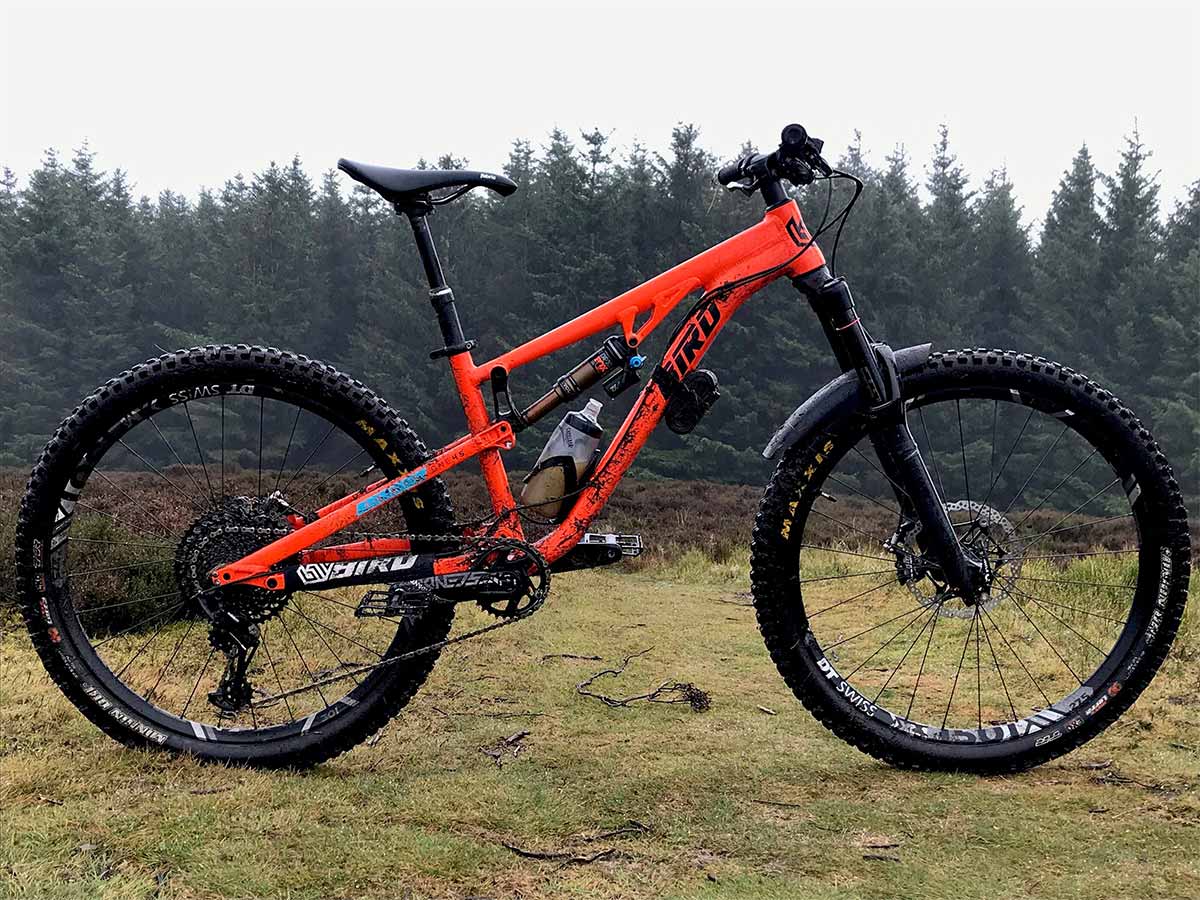
Bird are a direct sales-only company. The Aeris is available now in both the 145 and 160 rear wheel travel options, with 140mm-160mm fork. It comes in sizes Small through to Extra Large, serving riders from 4ft 11″ to 6ft 3″(+). Anodised black is the most popular frame color but it is also available in (much more photogenic) tangerine orange and lime green. The frame alone will set you back £1,100 (~$1,390), with full customisation of almost every component available.
